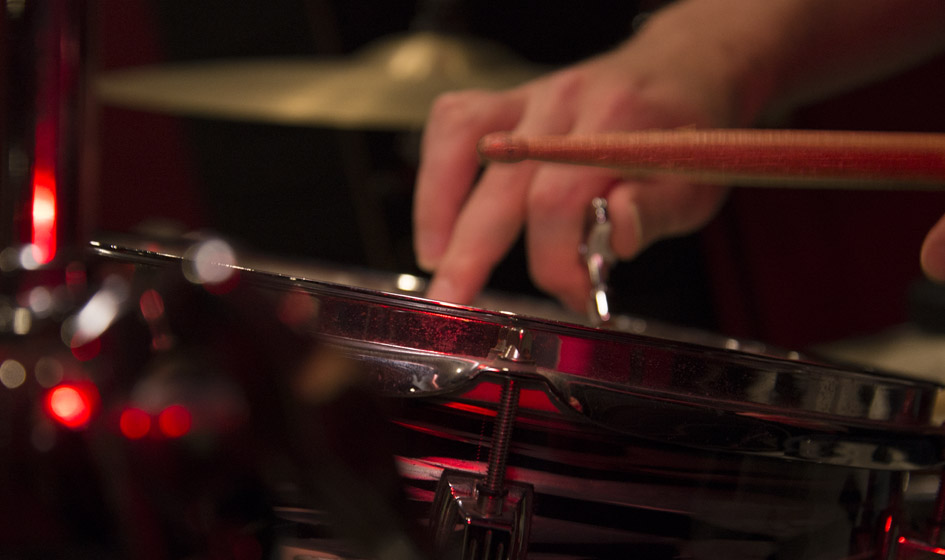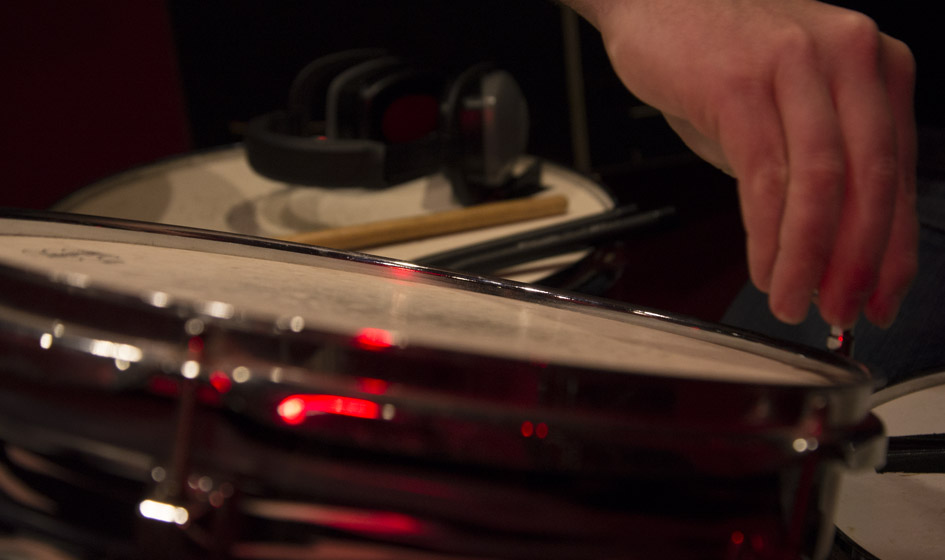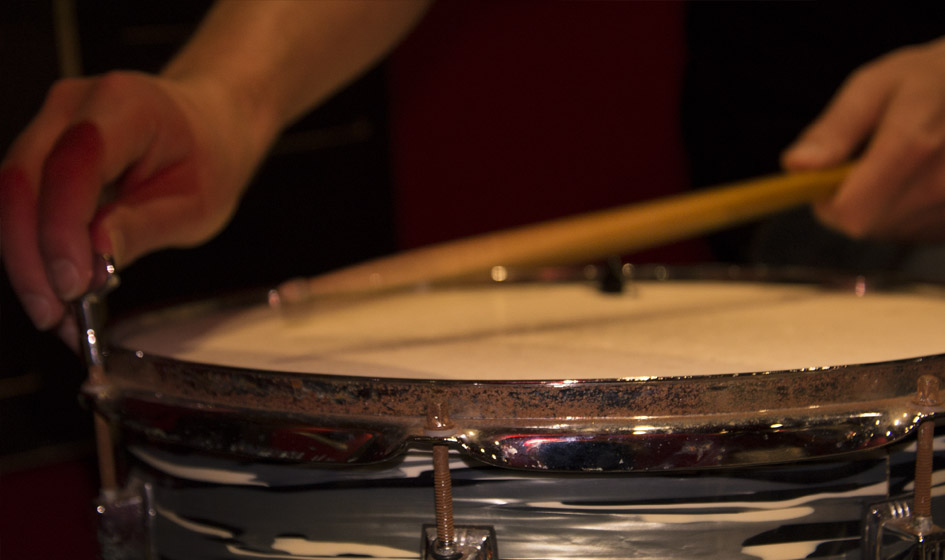Tuning drum kits is, of course, nothing like tuning guitar. But it is, arguably, just as important in the pursuit of a fine recording. The why is easy: a tuned kit will resonate wonderfully, have pure sustain and add character and life to the band. You know the sound of a broken-down old kit languishing in the corner of a high school rehearsal room? It’s the opposite of that.
The how is much less clear. There is an incredible array of techniques for tuning a kit with many a drum tech vowing that their method is the best. Work with enough drummers and you’ll get the full gamut of drum tuning styles. Some are dependent on genre, some are dependent on the kit itself. In the end is a combination of both that really matters.
 From gaffing up drum heads to beating toms around a room, getting drums sounding great in a recording environment can be a laborious task. We take a quick look at the ins and outs of tuning drum kits in the studio.
From gaffing up drum heads to beating toms around a room, getting drums sounding great in a recording environment can be a laborious task. We take a quick look at the ins and outs of tuning drum kits in the studio.
It’s rare that you’ll see a kit in a pro recording studio that doesn’t have some modifications applied to it by a tech or the player themselves. This usually comes in the form of gaffer tape.
If you’re not familiar with gaff, it’s basically the lifeblood of the rock and roll world, the sticky stuff that literally holds the whole enterprise together.In spite of its rather magical qualities, going overboard with gaff should be avoided.
Why? Well, the movement of drum heads (or skins), when the drum is struck is crucial to the tone, resonance and sustain of the sound. Lathering on the gaff will “choke” the drum sound which, while can be desirable, creates an unavoidable loss of upper harmonics in the frequency spectrum when the drum heads are muted too much.
 Without getting too techy, sounds are made up of a fundamental frequency, and subsequent harmonics. When these harmonics are resonating in sympathy, the tone is full, rich and alive. Applying too much gaff will result in the muffling of these subtle harmonics, resulting in a sound which is dull, lifeless and artificial.
Without getting too techy, sounds are made up of a fundamental frequency, and subsequent harmonics. When these harmonics are resonating in sympathy, the tone is full, rich and alive. Applying too much gaff will result in the muffling of these subtle harmonics, resulting in a sound which is dull, lifeless and artificial.
Gaff should be reserved to tuning out undesirable rings and should be applied to suit the room in which the recording is taking place. Before taking this measure, tuning the lugs on the drums, both the top head and bottom head on each drum, and getting them to work well within the space should be given priority. The entire character of a kit and consequently, a musical style, can be affected greatly by experimenting with drum tuning.
The room is quite important for drums because the kit is a loud acoustic instrument and creates enough energy to cause reflections in any given environment. Being conscious of the room’s character – whether it’s live with hard, reflective surfaces, or dead, with absorptive surroundings – is crucial to drum tuning decisions.
 Sound engineers will often search for the best place in the room in which to set up the kit, beating the floor tom or kick drum and moving around the room in order to find the most pleasing resonance in a given space. Intelligent treatment of the space can be just as effective in “tuning” the drums.
Sound engineers will often search for the best place in the room in which to set up the kit, beating the floor tom or kick drum and moving around the room in order to find the most pleasing resonance in a given space. Intelligent treatment of the space can be just as effective in “tuning” the drums.
As with so many other aspects of sonic recording, the methods are many and varied. Perhaps it’s more important to understand why it’s crucial to tune your drums well. If you get it right at the source, it will sound great when you capture it with microphones.


